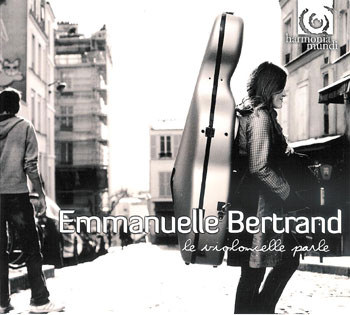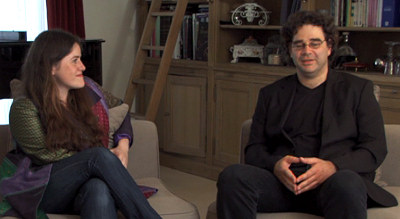Zoltán Kodály – Sonate pour violoncelle seul – Cello sonata op. 8 – Emmanuelle Bertrand

|
La Sonate pour violoncelle op. 8 de Zoltán Kodály est devenue une pièce presque obligée du répertoire des violoncellistes ; on s’est amusé à recenser les versions plus ou moins disponibles…
En italique, celles que l’on a pu écouter. Il en manque (Piatigorsky…) et apparemment Rostropovitch ne l’a jamais enregistrée. Les versions Clein et Kliegel sont très honorables, Queyras (on se rappelle d’excellents concertos de Haydn et suites de Bach) est très élégant mais ça manque singulièrement de corps, Xavier Phillips n’a pas laissé grande impression. La seule version que l’on peut mettre en regard de celle d’E. Bertrand est celle du « prince des violoncellistes », Pierre Fournier, (ici dans un enregistrement public de 1959 (Praga) – à ce propos, on aimerait bien connaître celle du violoncelliste du quatuor Prazak, l’excellent Michael Kanka. Emmanuelle Bertrand prend son temps : 10 à 20% plus lente que Fournier dans chacun des 3 mouvements. On perd peut-être un peu de naturel dans les nombreuses figures rythmiques, mais on y gagne en intériorité : on se sent guider par elle dans un voyage intérieur, conforté par sa technique impeccable, son intonation infaillible, sa sonorité aussi aérienne que fruitée et la qualité exceptionnelle de la prise de son. Pour une fois, on est très content de toutes les distinctions qu’elle a pu recevoir récemment du milieu de la critique professionnelle. Une musicienne au sens fort du mot à la discographie déjà très fournie. |
The cello Sonata Op. 8 by Zoltán Kodály has become an almost obliged part of the repertory for cellists; we have listed –left– the versions more or less available… In italics, those we have listened to. Some surely are missing (Piatigorsky…) and apparently Rostropovitch never recorded it. The versions Clein and Kliegel are very honorable, Queyras (one remembers excellent concertos of Haydn and Bach Suites) is very elegant but presents a very light body, Xavier Philips did not leave great impression. The only version which one can place against E. Bertrand is from the “prince ofcellists”, Pierre Fournier, (here in a public recording of 1959 (Praga) – on this subject, we would like to listen to the version by the cellist of the Prazak quartet, the excellent Michael Kanka. Emmanuelle Bertrand takes her time: 10 to 20% slower than Fournier in each of the 3 movements. Perhaps we lose a little naturalness in the many rhythmic figures, but we gain in interiority: one feels to be guided in an interior voyage, consolidated by her impeccable technique, her infallible intonation, her splendid sonority and the exceptional quality of the sound recording. For once, we agree with all the distinctions she recently received from the (French) professional criticis. A true musician with an already extensive discography. |
||||||||||||||||||||||||||||||||||||||||||||||||||||||||||||
 |
|||||||||||||||||||||||||||||||||||||||||||||||||||||||||||||
|
L’album, à côté de la suite n° 3 de Britten et d’une suite de Gaspar Cassado, propose Itinérance, de son compagnon Pascal Amoyel, œuvre très prenante, plus immémorialle que contemporaine, qui se termine par le chant – vocal – de la violoncelliste, comme pour exprimer l’indicible de la condition humaine. Je n’en dirai pas plus que l’excellent commentaire de l’album dû à Sylviane Falcinelli. L’album est complété par un DVD intéressant, notamment une séquence de travail sur la sonate de Kodaly, la complicité de son directeur artistique lors de l’enregistrement et l’intervention de Pascal Amoyel (photo). Cf. aussi « Le concert idéal« . Un maître-disque ! |
Besides Britten Suite n° 3 and a Suite by Gaspar Cassado, the album proposes Itinérance, a work by her companion Pascal Amoyel, a very fascinating work, more unmemorable than contemporary, which ends with the singing – vocal – of the violoncellist, like telling the inexpressible human condition. I will not tell more than the excellent comment of the album by Sylviane Falcinelli [fr]. The album is supplemented by an interesting DVD, in particular a sequence on the Kodaly sonata, the complicity with her artistic director during the recording and the intervention of Pascal Amoyel (photo). Magnifiscent… |
||||||||||||||||||||||||||||||||||||||||||||||||||||||||||||
